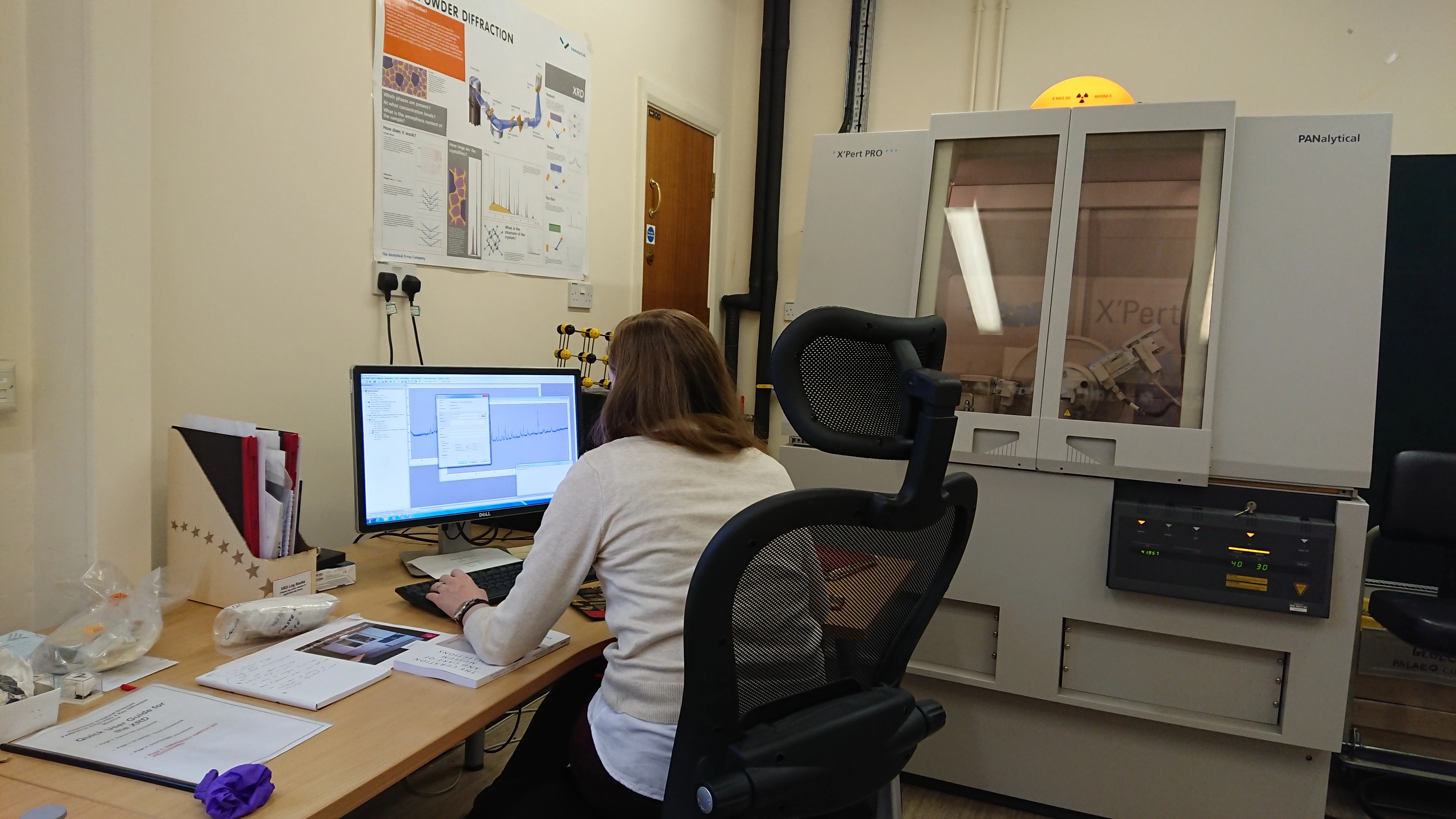Dehydrating minerals
, 8 Awst 2019
What do you do if you have minerals in your collection that have a tendency to react chemically? For our research student Kathryn Royce this means: growing minerals from a super saturated solution, then sticking the crystals in a climate chamber for a few weeks and forcing them to dehydrate.
Yes, you read right, some minerals can dehydrate. There is a good number of mineral species which are poly-hydrated, meaning, minerals that contain water molecules as part of their crystal structure. Many of these mineral species can, under certain conditions, lose some of these water molecules. This process actually turns the mineral into a different mineral – just one with a lower hydration status.
For example, the mineral melanterite (FeSO4 · 7H2O), which has 7 water molecules, may lose some water molecules if kept at a relative humidity below 57%. The resultant products include either the mineral siderotil (same chemical formula but only 5 water molecules) or rozenite (4 water molecules). In the context of wanting to preserve melanterite in a museum collection, the dehydration products siderotil and rozenite, whilst minerals in their own right, would be classed as deterioration products and, hence, their appearance be undesirable.
To understand this process, and define how we would characterise the concept of ‘damage’ to mineral specimens, Kathryn is now analysing the deterioration products using a combination of different analytical techniques, including X-ray diffraction, electron microscopy, Raman spectroscopy and computerised tomography scanning. The results will help us develop a methodology for long-term monitoring of geological collections in museums and improve the care of such collections in museums.
This research is being undertaken at National Museum Cardiff in collaboration with the School of Geography and Environment at University of Oxford and the EPSRC Centre for Doctoral Training in Science and Engineering in Arts, Heritage and Archaeology (SEAHA), and kindly supported by OR3D, BSRIA, the Barbara Whatmore Charitable Trust, the National Conservation Service, and the Pilgrim Trust.
Find out more about Care of Collections at Amgueddfa Cymru - National Museum Wales here and follow us on Twitter.

